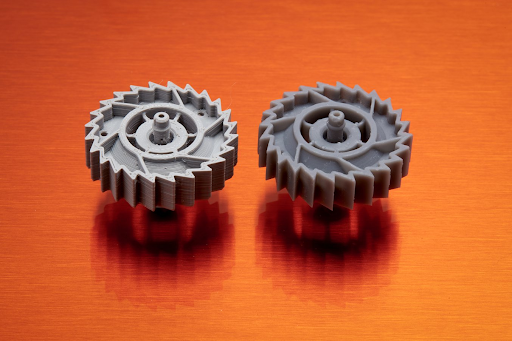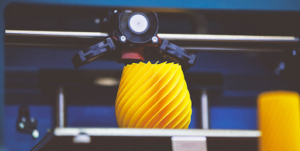FDM vs. SLA: Differences and Similarities

The 3D printing and added substance fabricating market has gone through fast change as of late. At this point, not principally the space of specialists, profoundly proficient work area machines have formed into fundamental devices for organizations. After turning into the go-to instrument for prototyping and item improvement, 3D printing use has extended across assembling, dentistry, adornments, and considerably more.
Intertwined affidavit demonstrating (FDM) and stereolithography (SLA) are the two most famous 3D printers. Both 3D printing advances have been adjusted and refined for the work area, making them more reasonable, simpler to utilize, and more able.
In this article, we will discuss FDM and SLA 3D printers and how they work compared to various factors.
What is 3D Printing?
3D printing is a revolutionary new technology that has the potential to change the world as we know it. This cutting-edge process uses digital designs to create physical objects, allowing anyone with access to a 3D printer to create customized products at home. The process starts by a digital design created in a 3D modeling software like SelfCAD. SelfCAD is an online 3D design program that is the best alternative to Vectary. It is easy to use and you can use it to create both simple and complex models with ease.
Not only does 3D printing have massive implications for manufacturing, but it also has the potential to revolutionize many other areas of our lives, including healthcare, education, and even food production. Whether you are looking to print custom prosthetics or design your own clothing line, 3D printing offers infinite possibilities for creativity and innovation.
What is FDM 3D Printing?

FDM represents fused deposition modeling. FDM innovation keeps the material in layers to make a 3D-printed object. Plastic fiber is taken care of through a hot expulsion head. In the expulsion head, the fiber gets softened. This softened fiber will be stored by defining plastic boundaries on top of past layers. FDM printing is one of the most broadly involved types of 3D printing to date.
This can be credited to the way that the FDM printer comes at a low cost. The holding power of FDM-type printers isn’t an area of strength significantly. This prompts layer division of coming about prints thinking twice about the goal and surface perfection. Likewise, assuming the measurement of the expelled plastic line gets more modest, the printing velocity will descend radically.
What is SLA 3D Printing?
Stereolithography was the world’s most memorable 3D printing innovation, designed during the 1980s, and is as yet quite possibly the most famous advance for proficiency. SLA 3D printers utilize a laser to fix fluid tar into solidified plastic in a cycle called photopolymerization.
SLA pitch 3D printers have become tremendously famous for their capacity to create high-precision, isotropic, and watertight models and parts in the scope of cutting-edge materials with fine elements and smooth surface completion. SLA sap definitions offer a broad scope of optical, mechanical, and warm properties to match those of standard, designing, and modern thermoplastics.
The difference in printing methods
- FDM technology: FDM is the most famous procedure. It is a dependable, easy-to-use, and reasonable strategy for making layers that stick to one another to shape an item. We should make sense of how those functions. Cura, Slic3r, and Simplify3D are genuine instances of cutting apparatuses that can be utilized to make these records. This program “cuts” the item into individual layers and creates a code that guides the printer. The FDM 3D printer then realizes which layers to make individually. The more perplexing or more modest the article, the better these layers ought to be.
- The PC record (generally a . STL or . OBJ) gives the 3D printer all the data it requires to begin. In any case, the layers must be made with the material. With FDM printers, we call this material fiber. FDM printers can print an enormous number (areas of strength for of) of materials.
- SLA technology: SLA is the condensing for Stereolithography Equipment or just stereolithography. Like FDM, SLA is an added substance strategy: models are fabricated layer by layer. Rather than utilizing plastic fiber, Stereolithography utilizes a fluid gum material. When presented with the right light, the pitch for all time solidifies to another shape.
SLA printers likewise print layer by layer, yet rather than expelling material, they destroy a tank loaded with pitch solution. The process starts with the gum arrangement and a light source that can be painstakingly focused on at the lower tar layer. The SLA printer involves a 3D record with directions for focusing on that light source.
The printer, as a rule, contains a base for the 3D item to expand on. The base travels through the tank (the photopolymer box) with fluid as the article is fabricated layer by layer. Each layer is then solidified into a strong layer. The print bed then ascents marginally to permit the following layer to solidify, making the item, bit by bit, ascend from the profundity.
Materials, material costs, and colors
When we analyze FDM versus SLA 3D printing, we also need to consider the materials, particularly the expenses. FDM innovation is the most famous strategy; subsequently, a wide range of materials have been created for it. FDM printers can print on an assortment of materials, including the most well-known ones: ABS, PETG, and PLA. Different fibers, for example, nylon, TPU, PVA, TPU, PEEK, Ultimo, and combinations of wood, pottery, metal, carbon, or filaments, can likewise be handled. There are many varieties of fiber to browse, and they can be handcrafted. A run-of-the-mill FDM printer utilizes fibers with breadth between 1.75 mm and 2.85 mm.
With SLA printing, the materials are restrictive: they can’t be utilized in an SLA printer from another producer. Every producer plans its tar box, so it will just fit on its printer. The decision of material tone is highly restricted from yellow, dark, white, and maroon to cyan. Various pitches are accessible, and in many cases, excellent introducing materials make them reasonable for modern use. The tar utilized in SLA printing is additionally very costly, contrasted with equivalent sums you get with fibers.
SLA vs. FDM: 3D printer price
You need to compute which 3D printing innovation is generally financially proper. An FDM printer costs about $2000, while the SLA variation with a similar development volume ought to cost insignificant multiple times more.
FDM vs. SLA: Adhesion
Adhesion alludes to how effectively the article can ultimately be taken out. With FDM, this is somewhat straightforward. If it sticks, there isn’t anything a nice range blade can’t do.
With SLA printers, it is the very inverse. The item adheres to the base-like paste. Eliminating the 3D printed model from the bed is hence normally troublesome. Frequently a ton of pitch stays on the stage that you need to eliminate with a range blade. This requires significantly more exertion than an FDM printer so prepare for some challenging work there.
SLA vs. FDM: Post-processing
As depicted above, FDM innovation makes it extremely simple to eliminate the article. After evacuation, the subsequent stage is to remake the plan mistakes in the last print. You can fill openings with epoxy pitch or ABS-acetone compound. You will have to clean the surfaces by sanding them or smoothing them with fume.
As composed previously, the evacuation of the model is a touch more muddled with SLA than with FDM because tar deposits might be abandoned. The hard deposits should likewise be taken out from the actual item. This should be possible by putting them in a shower of isopropyl liquor. This ought to be done cautiously with gloves to shield the model from destructive substances. The subsequent waste ought to be discarded in unique holders. To get a smoother surface, you can sand or clean the surface. You can likewise utilize mineral oil to conceal any discoloration.
SLA vs. FDM: Printing speed
FDM can be set to print quicker than SLA. FDM printers discharge a great deal of intensity, typically requiring the client to get some margin to cool and fix the material. The sort of material decides the time expected to warm the material and then cool it down again.
SLA machines are quick since they utilize light sources focused on unambiguous objective regions. The utilization of photopolymer permits the UV light to fix the material in a brief timeframe. The more grounded the light source, the quicker the restoration system. There is less intensity discharged simultaneously.
Advantages of FDM 3D printing
- FDM printers are, for the most part, entirely at a reasonable cost.
- The materials for FDM printers are cheap and broadly accessible.
- Exact coding can be utilized to make precise, excellent items.
- FDM printed items can be utilized for an assortment of purposes; improved fibers make them sturdier.
Disadvantages of FDM 3D printing
- FDM printers are restricted in the intricacy of the subtleties they can deliver, so for better models or expert quality models, SLA machines are a superior decision.
- Favored use in a ventilated climate
- It is incredibly vital to align the machine appropriately.
Advantages of SLA 3D printing
- SLA printers can be utilized to make exceptionally itemized and complex plans.
- Layers are artificially reinforced rather than precisely, similarly to FDM, permitting high mechanical strength isotropic parts to be acquired.
- The outcome is smoother, so sanding is much of the time excessive.
- All SLA printers are fitting and playing.
Disadvantages of SLA 3D printing
- Models made of sap can be harmed by delayed openness to the sun.
- Higher normal expense
- SLA printing is more intricate. Specialized information is expected to utilize the 3D printers.
Also Read: Homes For Sale By Owner Should You Sell Your Home.




